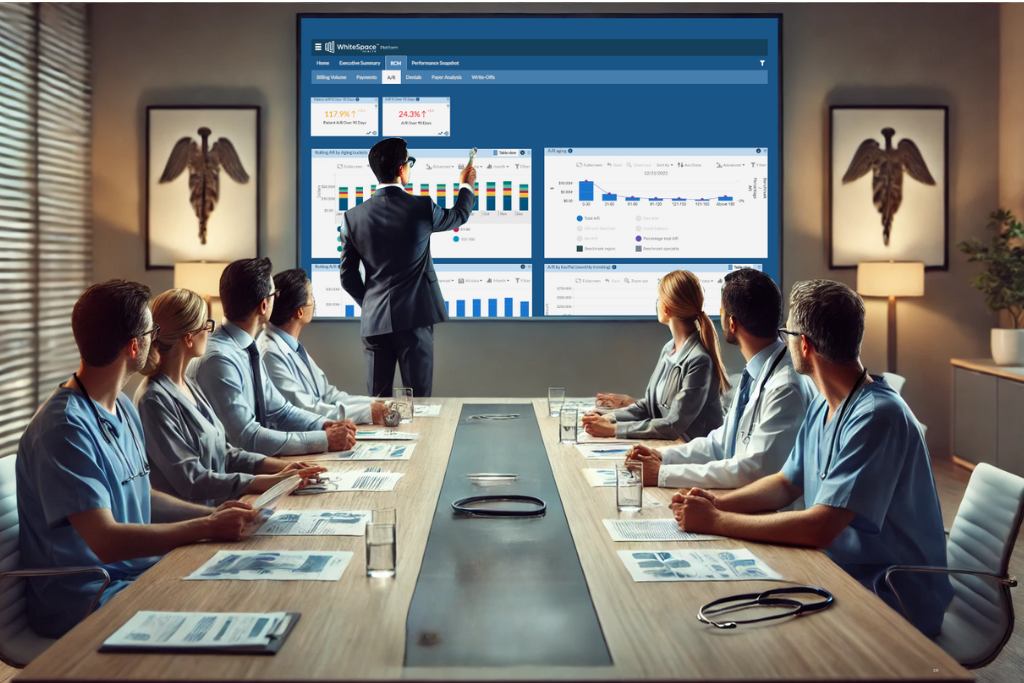
by Carrie Bauman
MGMA provides industry standard benchmarks for medical practices. Among these, the AR benchmark is particularly important as it reflects how quickly a practice can collect payments after providing services. The goal is to maintain days in AR at 30 days or less, a key indicator of a practice’s efficiency in managing its billing and collections processes. Exceeding this threshold can signal potential revenue leaks, inefficiencies, or other issues in the revenue cycle that need to be addressed promptly.
AI-powered healthcare analytics solutions can be a game-changer in helping practices adhere to MGMA standards for AR. By continuously monitoring AR metrics against industry benchmarks, AI can identify patterns that suggest revenue leaks or inefficiencies in the billing process. For instance, if AR days start to trend upwards, AI can quickly flag this change and provide insights into the root cause, whether it’s a delay in claims processing, issues with payer reimbursements, or inefficiencies in patient collections. This proactive approach allows practices to address issues before they become significant problems, ensuring they maintain optimal revenue cycle management best practices.
WhiteSpace Health’s AI analytics platform is designed to help medical practices maintain the MGMA standards for AR. The platform offers comprehensive tools to monitor, analyze, and optimize various aspects of the revenue cycle, ensuring that practices can maintain AR within the 30-day benchmark. By leveraging advanced healthcare analytics solutions, the platform provides real-time insights and actionable intelligence to help practices improve their medical practice benchmarking efforts.
This KPI tracks the total AR balance over time, providing insights into the overall health of the revenue cycle.
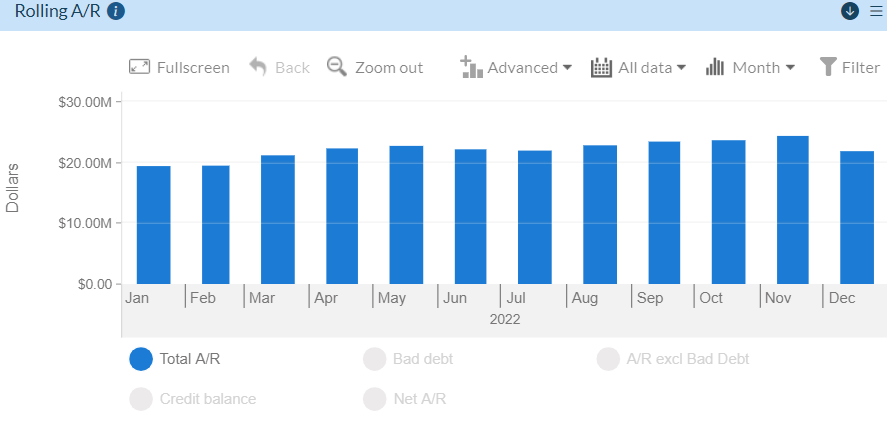
This metric measures the average number of days it takes to collect payments, helping practices stay within the 30-day benchmark.
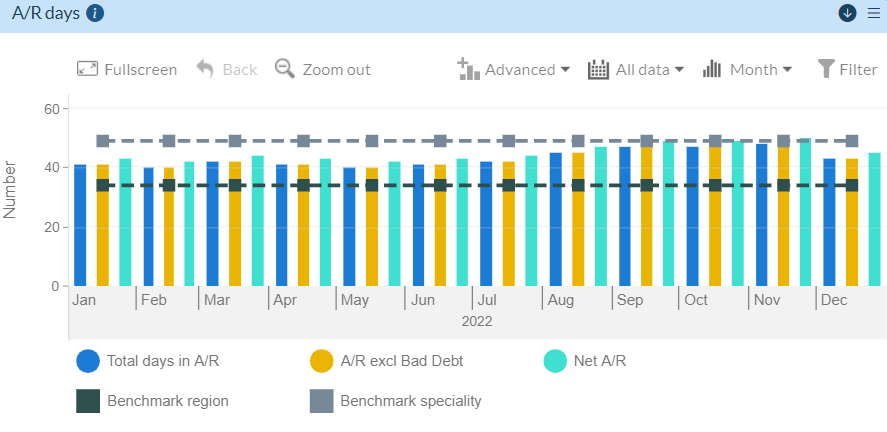
Monitoring AR that is over 90 days old is critical, as it represents a higher risk of bad debt.
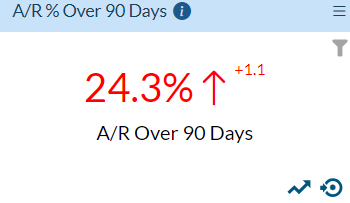
This KPI helps practices analyze AR based on payer and patient, excluding accounts that are unlikely to be collected.
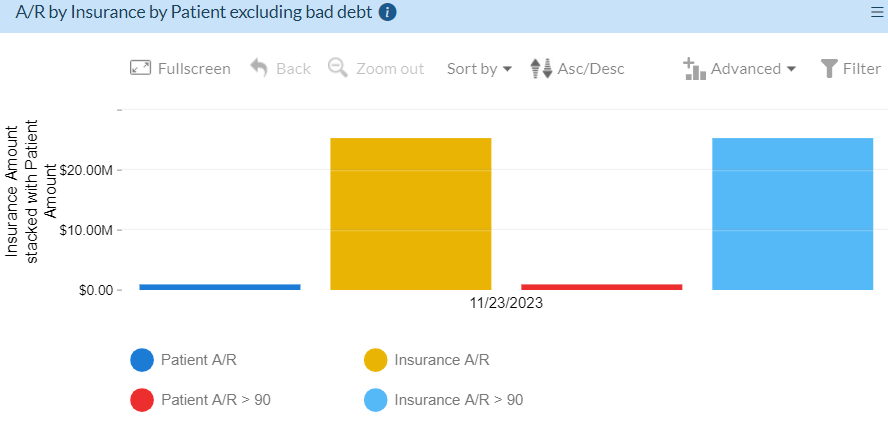
Tracking monthly trends in AR by payer and patient can reveal patterns that need attention.
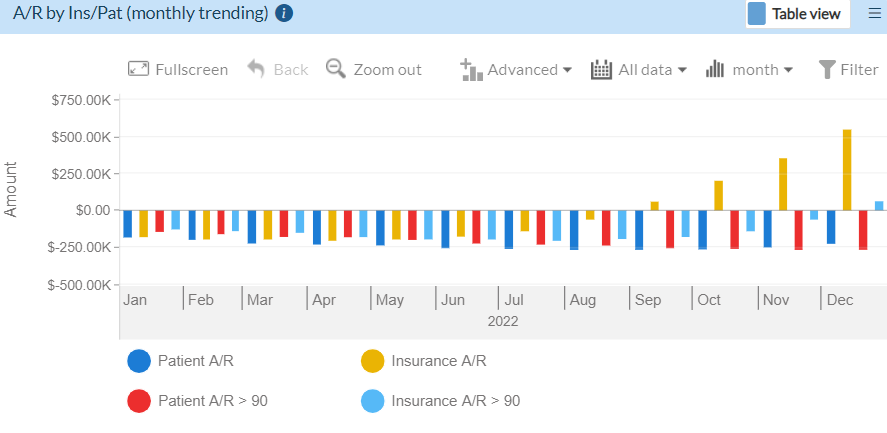
This KPI categorizes AR based on how long it has been outstanding, helping practices prioritize collection efforts.
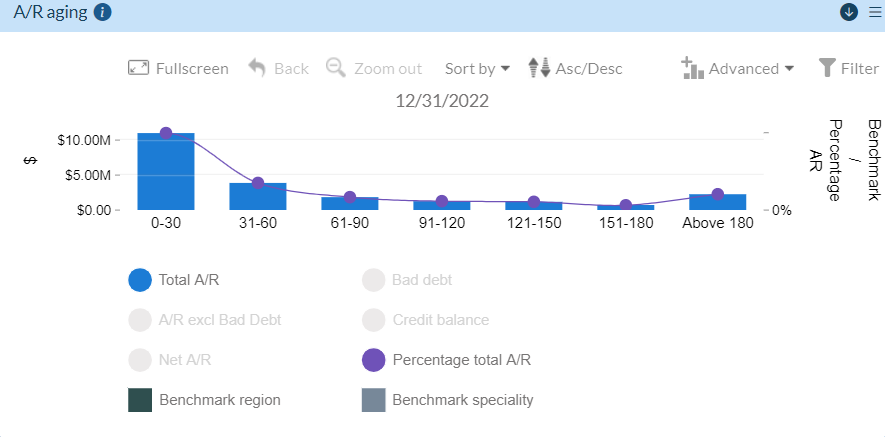
Monitoring AR daily ensures that any deviations from the benchmark are quickly identified.
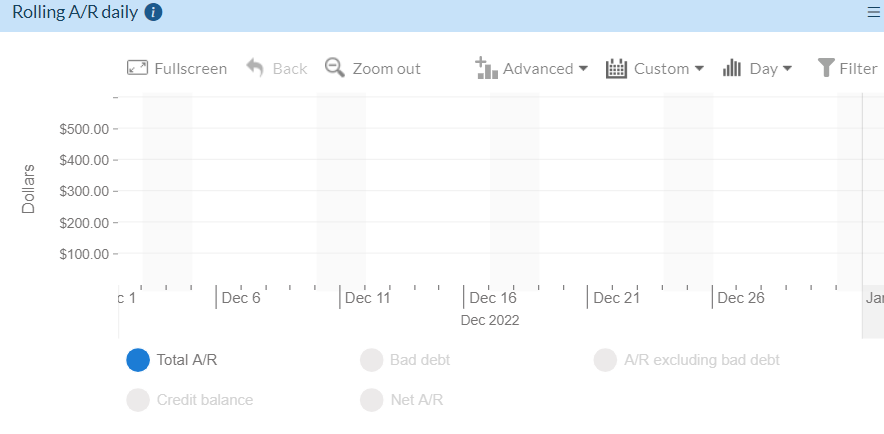
This KPI breaks down AR by specific aging categories, providing a detailed view of where potential revenue leaks might occur.

This metric tracks AR based on the original financial class, providing insights into payer mix and collection trends.



2424 North Federal Highway, Suite 205
Boca Raton, FL 33431